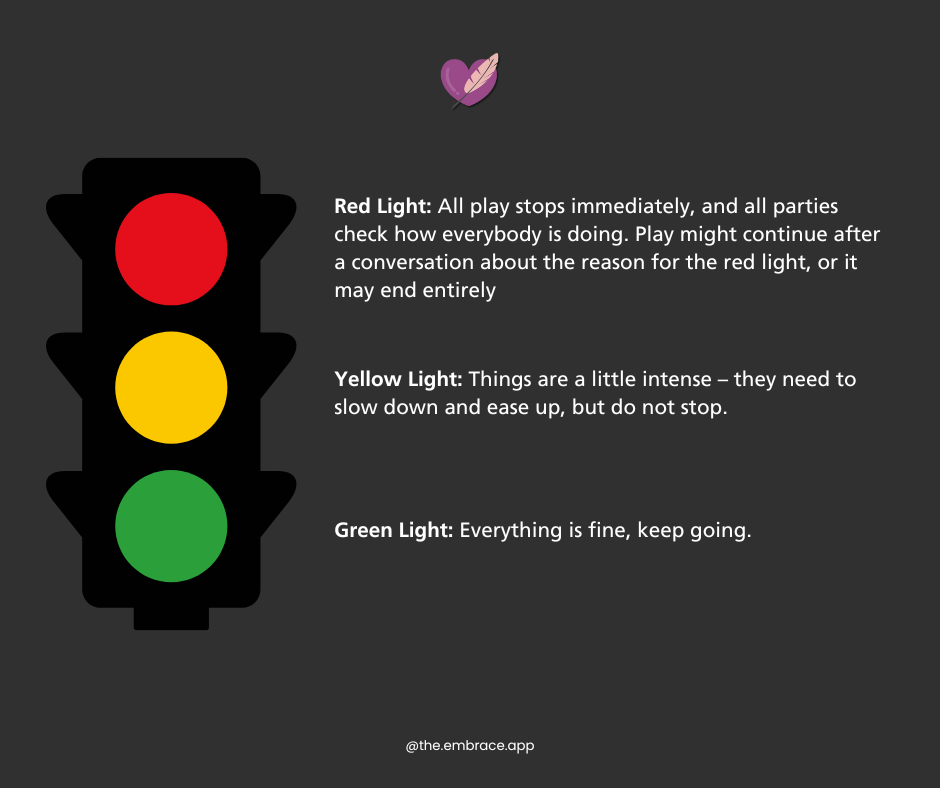Kink for Beginners: How to Explore BDSM Safely and Communicate Desires with Your Partner
written by Micah Brown
We all have to start somewhere. While some of you may have known of your kinky proclivities very early on, some of us didn’t find out about it until later on as we experimented with who we are sexually and as a relationship partner. Some people may have wanted to try kink for years but were too embarrassed to bring it up with partners. Some of you may have only recently discovered an interest in it, or realized that kink scratches an itch that’s been there your whole life.
Our primary goal with this article is to help those who are interested in kink find ways of approaching that may help alleviate some of their concerns. Some of these ideas and approaches can also be used for those who are involved in kink who are sheepish about new kinks they may want to try.
How to Know If You’re Kinky: Understanding Your Desires
Everybody’s idea of what “kinky” means can vary. We do not believe in gatekeeping and do not feel that a particular threshold must be reached. If you feel that an activity that you wish to try is outside of the mainstream norm, it can be considered kinky.
When thinking about this, consider the question: What does “kinky” mean to me?
You may feel that spanking during sex is kinky, and that may be as far as you want to take it, or perhaps you fantasize about extremes like knife play or Consensual-Non-Consent (CNC). Take some time and figure out what your desires are when you think about the term “kinky.”
What do you fantasize about?
Try writing down your fantasies and see how that makes you feel.
Look at kinky porn online or read kinky porn online (we do not recommend reading the series with 50 in the title as that is not a good representation of what kink is - we do not shame anybody for enjoying these books, but they are not a good educational example of healthy kink). There is lots of smut out there that contains good kink and finding it can be pretty easy, especially if you enjoy e-readers.
How Do I Talk To My Partner?
If you have come to the conclusion that some kind of kink is worthy of exploration with your partner, finding ways to talk about it may feel nerve-wracking. Maybe you want to get a feel for what your partner thinks of the idea of kink before you even bring it up as a possibility for you. There are various ways in which you can gauge their openness to kink without asking them outright if they’d be willing to be spanked or willing to spank you.
We talked about having you watch porn and read smut in the section above, but this can also be applied to your partner. If you enjoy watching any kind of porn together, maybe throw in something with some light kink of the variety you’re interested in. Or have them read a short paragraph depicting acts you may like to try and see how they react.
The very real downside to this approach is that even if they are turned on by these things, they may be too embarrassed to admit it and will, therefore, hide their true response. Think of it like that sitcom trope where two characters obviously want the same thing but laugh about the fact that they don’t want it all.
For myself, and that does not mean that I feel this is the best approach for everybody, being direct has always gotten me the answers I was looking for. How you approach directness with your partner may vary, if that is how you want to approach it. Not everybody asks “Are you kinky?” after sleeping with somebody for the very first time, nor would they follow that up with “How kinky are you?”
Be gentle with how you approach it and let your partner know that you are opening up about something that is a big deal for you and that it’s a serious topic you’d like to discuss. Talk to them about what is on your mind. Share some fantasies with them if they seem receptive to hearing them, and let them know that you want to try taking this journey with them.
How to Explore BDSM Safely as a Newcomer
Take it slow. Even if you fantasize about some of the more extreme aspects of kink, you want to take it slow. Do not jump into the deep end before you learn to swim.
If you know any kinksters who have been involved with their partner for an extended period of time, it is highly likely that they no longer need to have a discussion before every scene about what’s going to happen in it, what they can expect, and what limits are. If you are just starting out on your kinky journey, you need to have these conversations before engaging in kinky behavior. Not just the first time, but every time for a while, and then again if you add new kinks to try out. Talk about what’s going to happen in the scene. Write down and make certain you all understand it. It could look something like this:
This list is just an example. You are welcome to use it to build out your own list for your own activities.
The Importance of Safe Words and Setting Boundaries
A Safe Word is a word that is chosen by those within a kink scene that if used will put a full stop to all activities without question. Some prefer to use a single word, for example “Strawberry”, to end a scene, while others prefer some variation of what is known as the “Stop Light Method.”
The Stop Light Method has a little more flexibility to it and can foster more communication within the scene. It breaks down like this:
It is important that before engaging in any kind of kink, even if you feel that it is “just some light spanking” that there is a Safe Word in place. While people may believe that the Safe Word is just for the submissive partner to end a scene, it is there for all involved in the scene to put a stop to anything activity for any reason. If a Dominant feels the submissive is asking to go too far for their comfort, the Dominant can use the Safe Word and end the scene.
Make certain when you pick a Safe Word everybody knows what it is. Do not make it complicated or difficult to remember. Nobody wants to end up in a scene where somebody can’t remember the Safe Word and activities continue under the assumed belief that it is all still okay. This ends poorly in many ways, and nobody wants that to happen.
Why Aftercare Matters in BDSM and How to Practice It
After all is said and done and your kinky fun times have ended, it is time for Aftercare. While this is not an act of kink in and of itself, it is an important aspect to a kink relationship. Aftercare refers to the time after the play session when the Dominant provides care for the submissive so that they can recover physically and emotionally from the experience. Kink can be fulfilling, but it is also exhausting - especially when the scenes are intense. Don’t expect such intensity from your first few forays into kink play, but do start the habit of providing aftercare because it is more important than it might sound.
Aftercare, like kink, is very personal. While somebody may want to be wrapped in a blanket watching Lifetime movies, somebody else may prefer to be snuggled into bed with their Dom, or perhaps being read to in the bath. The idea is for the submissive to feel safe and cared for after going through a scene. It becomes more important as scenes become more intense, but building that habit is incredibly important so that it is not forgotten about.
What many people do not talk about is that Aftercare is just as important for the Dominant. It helps to strengthen the bond to their submissive, and allows their emotional state to recalibrate after a scene with their submissive. The act of providing Aftercare to their submissive is in itself their own form of Aftercare by allowing themselves to care for and be tender with their partner.
Tying it All Up: Building a Healthy and Enjoyable Kink Dynamic
Venturing into the realm of kink can be incredibly frightening, but it can also be incredibly rewarding. It has been found that people who are involved in kink and BDSM tend to have more emotionally rewarding and longer-lasting relationships. One of the reasons for this is the constant communication that must occur for kinks to remain safe and enjoyable between the participants.
A couple of points to end on: If your partner is truly not interested in kink, don’t try to force them into something they genuinely do not wish to do. This may involve a deeper dive into yourself to determine if kink is something that may need to be a part of your relationships. Finally, kink is something that is meant to bring fulfillment and enjoyment to you and your partner. Not all kinky activities will be for you, and that is okay. Just remember to keep communication open between those within the relationship dynamic and only try things that you truly feel ready to attempt.



